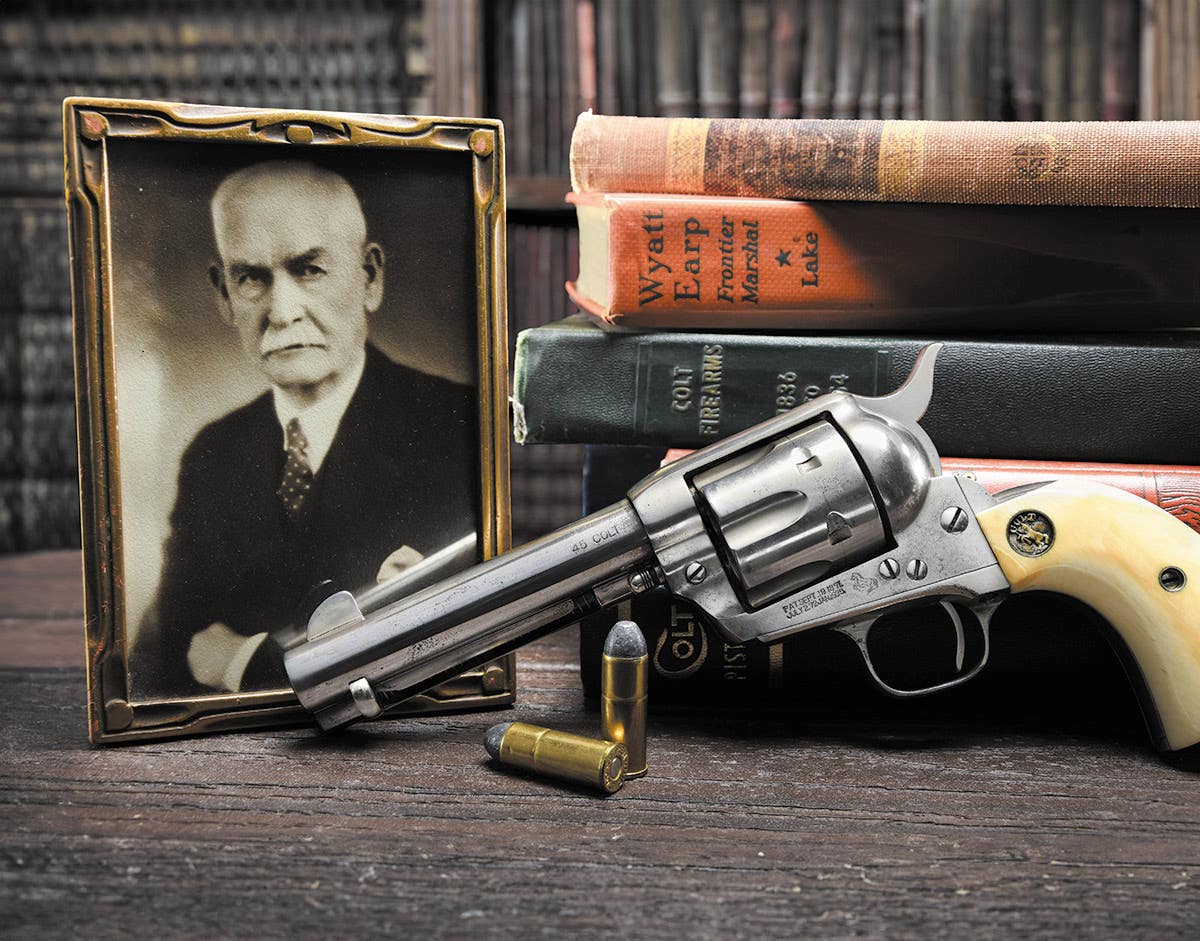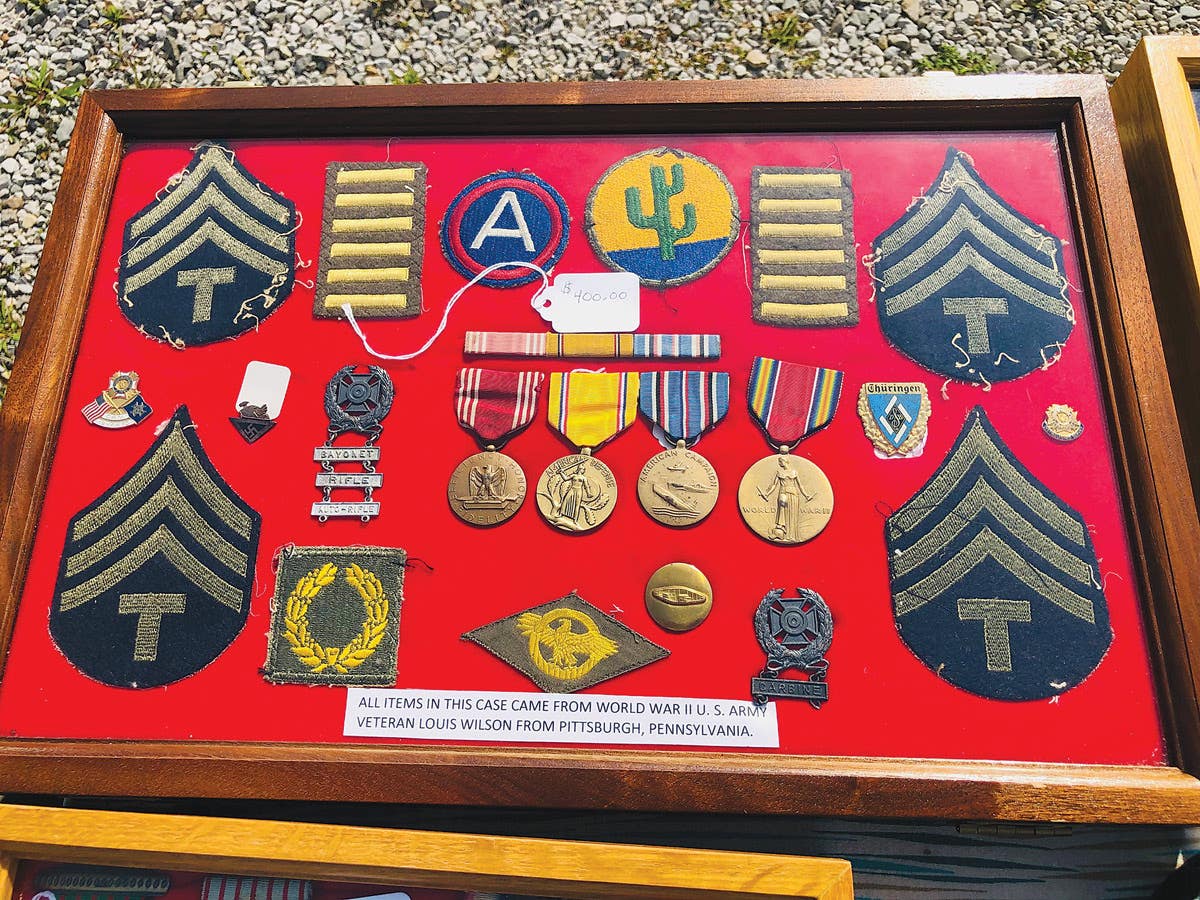Blades of the Black Guard
As an organization of the party elite, the SS wore uniforms that were carefully developed to evoke an aura of power, prestige, and above all, to instill a sense of fear in those who came in contact with the order. As with other organizations of the Third Reich, many members of the SS wore distinctive edged weapons for ceremonial reasons before the war made carrying of arms a more necessary concern.
When Adolf Hitler and the Nationalsozialistische Deutsche Arbeiterpartei (NSDAP — Nazi party) came to power in 1933, the Schutzstaffel (SS — Hitler’s private protection and political army) had already grown to a force of almost 200,000 members since its inception in 1925. The Allgemeine (general) SS were to be the “black knights” of the new German empire, possessing what the Nazis defined as “Aryan” traits, and who adhered to the perverse set of NSDAP principals.
As an organization of the party elite, the SS wore uniforms that were carefully developed to evoke an aura of power, prestige, and above all, to instill a sense of fear in those who came in contact with the order. As with other organizations of the Third Reich, many members of the SS wore distinctive edged weapons for ceremonial reasons before the war made carrying of arms a more necessary concern.
Early members of the SS did not have officially recognized edged weapons during the first eight years of their political struggle before the regime came to power. As many of the rank-and-file came from the German police, some early units adopted the police dress bayonet with the addition of the Totenkopf (death’s head) emblem attached to the stag handled grips.
1933 DIENSTDOLCH
In December, 1933, the SS adopted an official Dienstdolch (service dagger). These were made available for private purchase to each SS man. Only authorized SS depots could sell daggers to their members who often bought them using payment plans.
These impressive blades were modeled after a 16th century Swiss dagger with a two-sided broad-tapering blade, hour glass shaped ebony or dyed black wooden handle, and nickel silver wide elongated cross guards and pommels. On the top of the pommel was a cap/nut that secured the threaded tang of the blade which ran through the handle center. The grip contained a round enamel button on the top face with double SS runes surrounded by a silver rim and black background. The center grip was inlet with a spread winged eagle perched on an oak leaf circle around a canted swastika.
The motto, “Meine Ehre Heisst Treu” (My Honor is Loyalty), was etched on the blade. The maker’s mark was etched or stamped into the reverse ricasso, and the SS distribution center’s Roman numeral stamped into the cross guard reverse.
The blade was housed in a beautiful scabbard of black anodized metal with a nickel silver toe and throat. A silver ring was attached to the scabbard throat that could be clipped to a single leather suspension strap with a silver buckle.
Besides the standard dagger, special presentation models were given in 1934 by Ernst Röhm, leader of the Sturmabteilung (SA — brown shirts) to members of the SS old guard. These daggers had the etched phrase, “In herzlicher Kameradschaft, Ernst Röhm” (In heartfelt comradeship, Ernst Röhm) on the blade reverse.
Ironically, following the 1934 “Night of the Long Knives” when many in the SA leadership — including Röhm — were executed on Hitler’s orders, the head of the SS, Heinrich Himmler, presented a different dagger to the SS executioners. These 1933 models had their blades engraved with “In herzlicher Kameradschaft, H. Himmler” (In heartfelt comradeship, H. Himmler).
In 1936, the use of maker’s marks was dropped in favor of adopting the codes of manufacturers as established by the Reichszeugmeisterei” (RZM - Governmental material control office). By 1938, nickel silver parts of the daggers were replaced with plated pieces. This continued until production stopped in 1940.
1936 “CHAINED” DAGGERS
A more elaborate, second model of the SS dagger was produced beginning in 1936. It featured suspension chains bearing small shields of alternating SS runes and skulls attached to the upper scabbard throat and wide swastika engraved on center scabbard ring.
Only authorized for wear by SS officers or members of the “old guard,” the 1936 “chained” models bore no maker marks or distribution center stampings, As with the model 1933 weapons, the quality of the 1936 daggers dropped after the war began and materials were redirected. Plated parts replaced those of nickel silver, and painted scabbards. After the tide of war turned against the regime, production of the 1936 model stopped completely in 1943.
Those members who involuntarily left the SS were required to turn in their daggers, although they had purchased them privately. Those who had retired or resigned from the corps in good standing were allowed to keep their daggers The SS provided them with documentation authorizing the retention of individual daggers.
SS BAYONETS
As the Waffen-SS (armed SS) entered the battlefields, many members carried bayonets bearing the with distinctive markings issued by their depots. The typical K-98 edged weapon of the Wehrmacht can be found with a leather frog that has SS issuance markings on the reverse. When not in the field, Waffen SS soldiers could add a bit of flair for ceremonies or leave by wrapping their bayonet grips with black-and-silver wire portepees.
SS SWORDS
Members of the SS often carried swords for ceremonial purposes. Early examples were limited to unofficial models of army or civilian swords up until 1936. That year, because they were closely affiliated with the German police, the SS adopted swords that resembled those of the police.
Officer candidates and NCO’s could purchase and carry distinctive swords with straight, narrow blades ordered in lengths according to the wearer’s height. Thin silver “D” rings surrounded in each of the 13 grooves in the cut and polished ebony (or black-dyed) grip, footed with a silver ferrule cast with alternating acorns and oak leaves. The pommel cap on NCO swords was engraved with double SS runes, while the candidate’s caps were unadorned.
Each sword was housed in a black painted scabbard with a silver “woven” designed throat and formed metal toe. A single suspension ring was secured with a loop below the throat decoration. Though rarely encountered, today, black and silver NCO portepee with black runes could be wrapped about the bottom section of the sword handle, leaving the knot to hang below the sword body.
If a man was an SS commander, or a graduate of an SS officer’s training school he may have received an SS officer sword (Ehrendegen Reichsfuhrer-SS — Reichs Führer’s sword of honor). With each sword came an coveted presentation document.
These swords took the basic design of the NCO model, but differed in a few key respects. The pommel cap was in a stepped form while the grip was wrapped in silver wire. The grip center contained an inlaid silver circle with SS runes in a darkened background. Finally, the silver scabbard toe was a separate piece from the body, attached with 2 silver screws. A silver-toned bullion portepee with black encircled runes was meticulously wrapped around the sword handle to add to the impressive look of the blade.
All officers of the SS were not awarded SS swords, and those who did not receive one often wore army or civilian models as alternatives. The wearing of police swords with added SS pommel caps was also common for police officers who had joined the black corps.
In the last few years of Europe’s destruction, SS men replaced their daggers and swords with side arms. As teh allied troops occupied cities formerly held by the Third Reich’s officials, they encountered a vast variety of edged weapons. While many were destroyed after disarming the German people, thousands were confiscated — and taken as souvenirs. Today, these SS daggers and swords remain as true reminders of the darkest side of Hitler’s regime and his black guard.
Chris William has been a long-time member of the collecting community, contributor to Military Trader, and author of the book, Third Reich Collectibles: Identification and Price Guide.
"I love to learn new facts about the world wars, and have had the good fortune to know many veterans and collectors over the years."
"Please keep their history alive to pass on to future generations".








